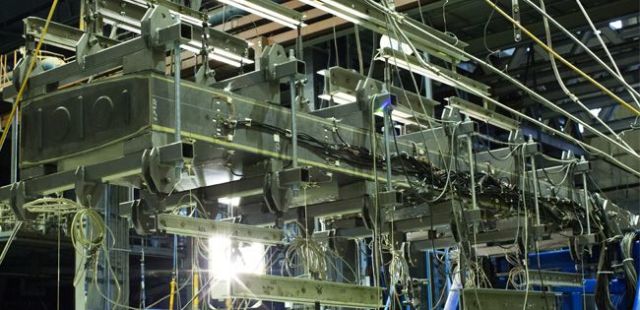Specialists of the Central Aerohydrodynamic Institute named after Professor N.E. Zhukovsky (part of the Research Center "Institute named after N.E. Zhukovsky") investigated the strength characteristics of the demonstrator of the power structure of the wing (caisson) of a promising small aircraft for local air lines.
The work is carried out within the framework of research and development "Research of promising innovative technologies and the appearance of aircraft that ensure the creation of a constructive and technological platform for small aircraft of a new generation" (code "MANGo-TsAGI") under an agreement with the Federal State Budgetary Institution "SIC "Zhukovsky Institute".
At the first stage (within the framework of research and development "Comprehensive research and formation of scientific and technical reserve, ensuring the creation of small aircraft of a new generation", code "MA 19-20"), specialists of the scientific and production complex (RPC) The TsAGI FAA designed and manufactured a demonstrator of the wing caisson of a nine-seat regional aircraft from Russian polymer composite materials.
A feature of the studied caisson design, made according to bionic principles, is the protection of the main power composite elements of the wing — two spars with rare (to reduce weight) ribs — multilayer shaping panels of the skin from impacts with an energy of up to 50 J. In addition, such an effective solution as the replacement of mechanical fasteners with adhesive joints has been applied. The production of the demonstrator was carried out at two sites: the spars — in the FAU "SibNIA named after S.A. Chaplygin" (Novosibirsk) by autoclave molding, the remaining elements — in the FAU "TsAGI" by vacuum infusion technology.
The next step was to determine the actual parameters of the caisson stiffness required to confirm the design characteristics. In particular, flexural and torsional stiffness, as well as elasticity influence coefficients were established during the tests. Preliminary analysis of the results showed a good correspondence of experimental and calculated values.
 |
| Demonstrator of the power structure of the wing (caisson) of a promising small aircraft. |
| Source: TSAGI Press Service |
Further, static tests of the demonstrator were carried out for such cases as forward and reverse bending moments and torsion. The caisson was loaded to the level of maximum operational loads experienced by the aircraft wing in flight. According to preliminary research results, the composite caisson withstood all loads without damage and residual deformations.
"For the first time, we have developed and tested a wing power structure demonstrator made of domestic composite materials. The results of the conducted experimental studies will be used to debug the technology of designing and manufacturing such structures," said Yuri Evdokimov, the head of the work, head of the design and production department of the Scientific and Technical center of the NPK.
MOSCOW, TSAGI Press Service

